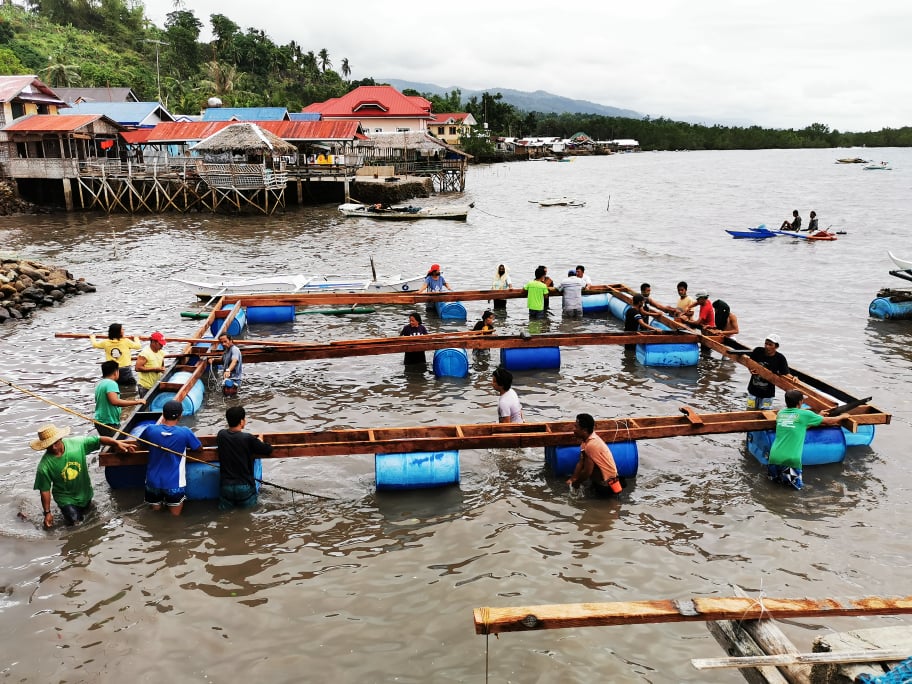
BFAR Negros Oriental has conducted training on constructing a marine fish cage for high-value species in Anibong, Ayungon.
The training was held at Barangay Anibong, Ayungon, Negros Oriental in February 10, 2022. It was attended by 15 Fisherfolk Beneficiaries of Anibong Fishermen’s Association, MAO, and MAO Staff, with BFAR as Resource Person and BMO NOCCI as a partner.
The training aims to provide alternative livelihoods to fisherfolk beneficiaries of AFA to increase their income. It will also reduce the fishing pressure by introducing and adopting appropriate environment-friendly technology. Furthermore, this will help develop members’ capability and cooperation in income-generating project management.
Cage farming, especially in well-protected coastal locations, is regarded as one of the most efficient ways of marine fish rearing. However, site selection is critical in any maritime farming enterprise. In addition, setting capital expenditure, operating expenses, production rates, and mortality can significantly influence economic viability.
Fishing is considered the primary source of income in the province’s coastal areas, like Anibong. However, the fisherfolk are poor, and their widespread poverty can be related to a marketing structure managed by middlemen. These people typically own consumer stores and buying stations where the fisherfolk sell their catch and purchase the commodities they need.
The fisherfolk sell low and buy high, causing their expenses to exceed their earnings, thus, succumbing to poverty. Meanwhile, the middlemen are wealthy because they buy low and sell high, making their profit greater than their expenses.
As a result, fisherfolk are forced to borrow money from middlemen for consumption and fishing expenditures at exorbitant rates that only serve to further their debt. The middlemen, concerned with bad debts, minimize their risk once their debts have grown large. Fisherfolk can’t maximize their catch if they don’t have enough money. As a result, fish production declines.
Some fisherfolk turn to illegal fishing. This strategy ruins fishing areas, resulting in more productivity decline. Over the years, importation has continuously increased to compensate for the limited supply.
Building marine fish cages for high-value species is one of the best solutions to help these fisherfolk.Both commercial producers and researchers are paying more attention to cage culture. Production of fish in cages has grown in popularity due to rising fish consumption, dwindling wild fish stocks, and a weak farm economy.
Management of fish cages must result in maximum output at the lowest possible cost. The administration has to be so effective that the cultured fish grow at the required rate of feeding frequency and stocking density. Too, it minimizes disease and predator losses, monitors environmental parameters, and keeps technical facilities in good working order.
It is therefore vital to come up with a sustainable operation of the project so the fisherfolk organization may be able to take advantage of it and help them support their livelihood and boost their income.

